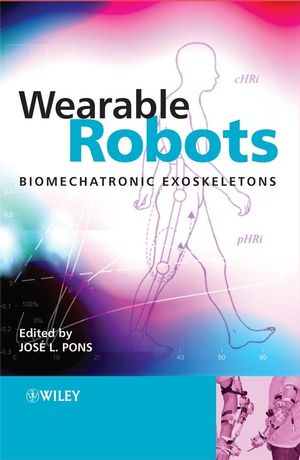Wearable Robots: Biomechatronic ExoskeletonsISBN: 978-0-470-51294-4
Hardcover
358 pages
March 2008
 This is a Print-on-Demand title. It will be printed specifically to fill your order. Please allow an additional 15-20 days delivery time. The book is not returnable.
|
||||||
Logical in structure and original in its global orientation, this volume gives a full overview of wearable robotics, providing the reader with a complete understanding of the key applications and technologies suitable for its development. The main topics are demonstrated through two detailed case studies; one on a lower limb active orthosis for a human leg, and one on a wearable robot that suppresses upper limb tremor. These examples highlight the difficulties and potentialities in this area of technology, illustrating how design decisions should be made based on these.
As well as discussing the cognitive interaction between human and robot, this comprehensive text also covers:
- the mechanics of the wearable robot and it’s biomechanical interaction with the user, including state-of-the-art technologies that enable sensory and motor interaction between human (biological) and wearable artificial (mechatronic) systems;
- the basis for bioinspiration and biomimetism, general rules for the development of biologically-inspired designs, and how these could serve recursively as biological models to explain biological systems;
- the study on the development of networks for wearable robotics.
Wearable Robotics: Biomechatronic Exoskeletons will appeal to lecturers, senior undergraduate students, postgraduates and other researchers of medical, electrical and bio engineering who are interested in the area of assistive robotics. Active system developers in this sector of the engineering industry will also find it an informative and welcome resource.



